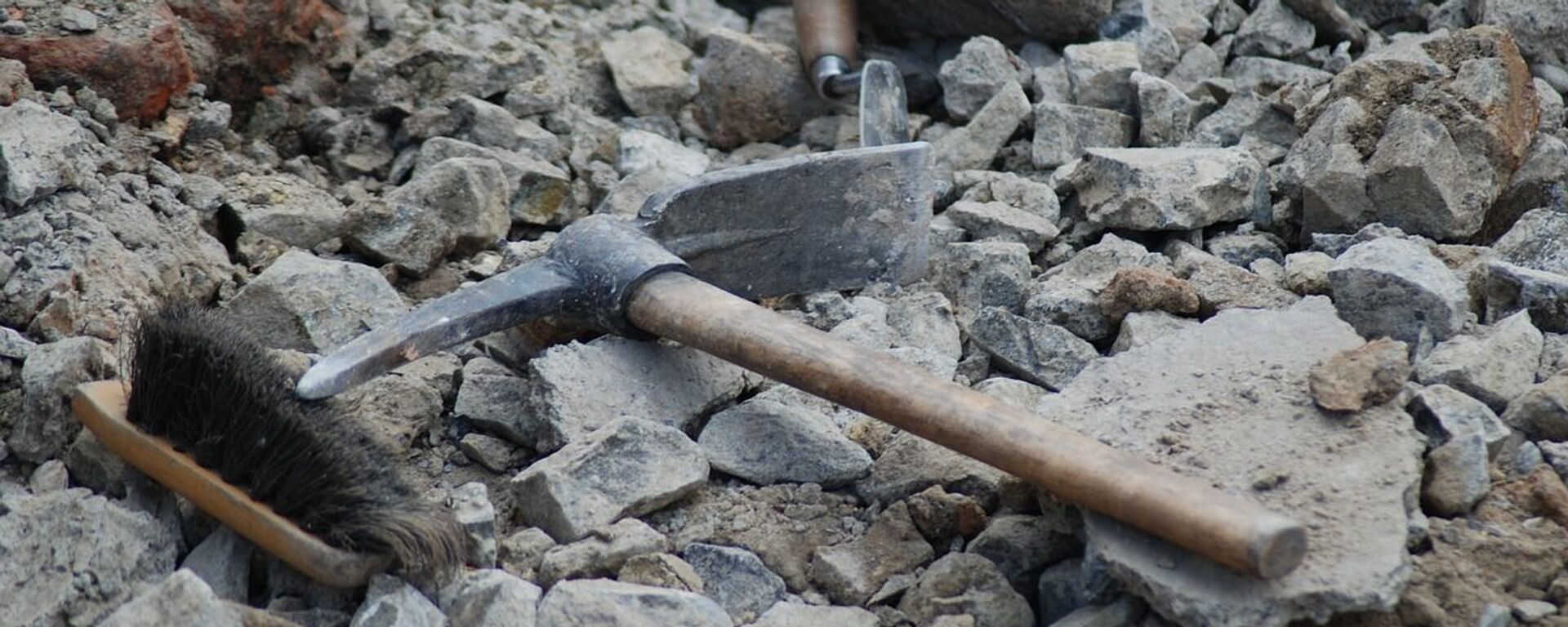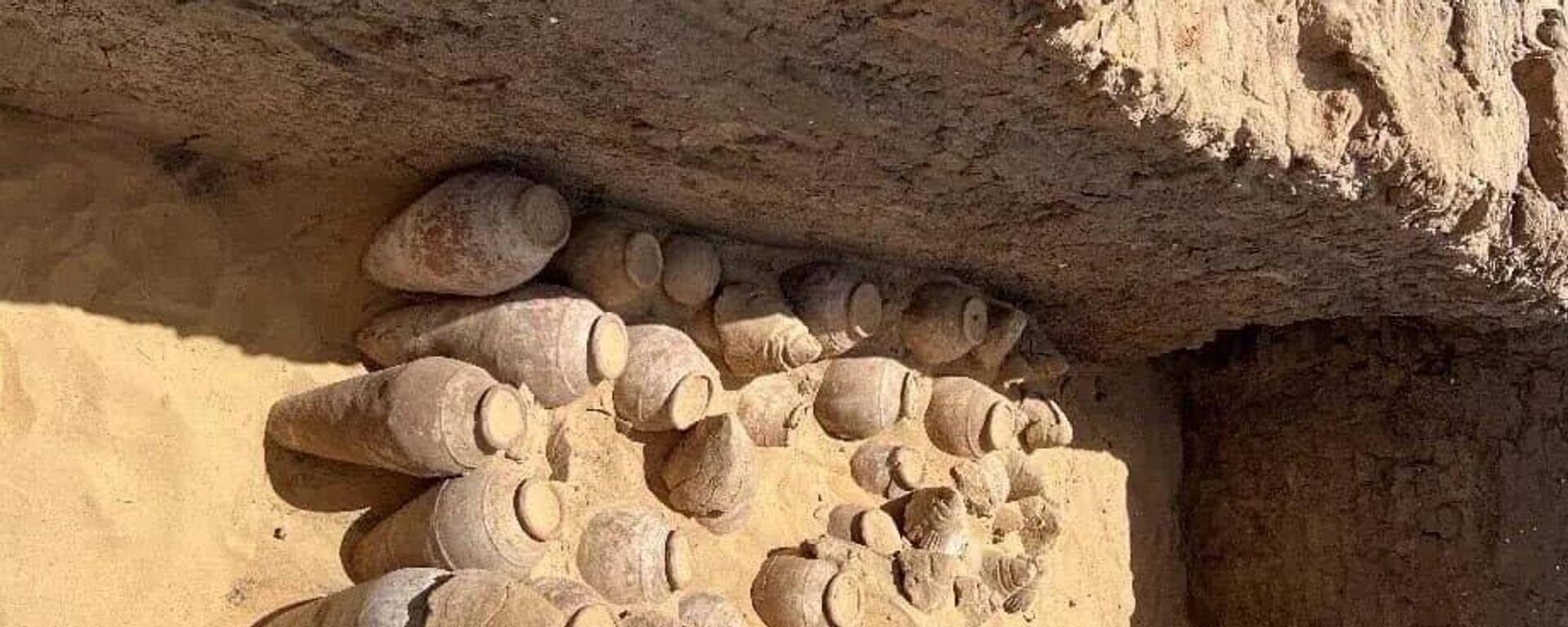https://sputnikglobe.com/20231017/11000-year-old-statue-of-mysterious-giant-figure-unearthed-in-turkiye-1114243313.html
11,000-Year-Old Statue of Mysterious Giant Figure Unearthed in Turkiye
11,000-Year-Old Statue of Mysterious Giant Figure Unearthed in Turkiye
Sputnik International
Archaeologists in Turkiye made a remarkable discovery, unearthing a 11,000-year-old statue believed to represent a colossal man, accompanied by a life-sized wild boar sculpture.
2023-10-17T01:22+0000
2023-10-17T01:22+0000
2023-10-17T01:18+0000
beyond politics
science & tech
turkiye
archeology
archaeology
archaeology
https://cdn1.img.sputnikglobe.com/img/07e7/0a/11/1114243154_0:128:1276:846_1920x0_80_0_0_f53645e68b8ec01cdf164631b12fa287.jpg
Archaeologists in Turkiye have unearthed an extraordinary relic from the dawn of civilization: an 11,000-year-old statue that appears to depict a towering figure. The enigmatic discovery was made alongside a life-sized limestone sculpture of a wild boar at the ancient temple sites of Gobekli Tepe and Karahan Tepe.The wild boar statue, dating back to 8,700-8,200 B.C., was discovered at Gobekli Tepe, measuring 4.4 feet in length and 2.3 feet in height. The sculpture's surface revealed traces of red, black and white pigments, suggesting it was once adorned with paint.The finds mark the latest in a series of extraordinary discoveries at these ancient sites, which are transforming our understanding of pre-agricultural societies, according to Benjamin Arbuckle, an anthropology professor at the University of North Carolina at Chapel Hill. Arbuckle was not involved in the study.Researchers also uncovered a small sculpture of a vulture at Karahan Tepe, although its age remains undisclosed. The site itself, however, dates back around 11,000 years and features other sculptures and structures.The discoveries challenge previous assumptions about the simplicity of hunter-gatherer communities in southwest Asia around 11,000 years ago. The complex and sophisticated nature of the artifacts found at Gobekli Tepe and Karahan Tepe implies a level of social organization and architectural prowess previously underestimated.Gobekli Tepe is a vast megalithic site adorned with T-shaped pillars and intricate sculptures depicting animals, symbols and human hands. The UNESCO-recognized site is believed to have been used in funerary rituals.The purpose of these newly discovered sculptures remains shrouded in mystery. The figure at Karahan Tepe could represent an important ancestor associated with the building where it was found, said Ted Banning, an anthropology professor at the University of Toronto who wasn't involved in the study. The posture of the figure might symbolize the progenitor of a social group, such as a lineage or clan linked to the structure.Banning suggests the structures at Karahan Tepe and Gobekli Tepe may have served as houses rather than temples, each housing their own lineage ancestor. He also notes it's plausible much of the sculpture at these sites were originally painted, although the paint has not survived in the archaeological record.
https://sputnikglobe.com/20231011/explorers-find-spectacularly-preserved-roman-tomb-with-frescoes-depicting-hounds-of-hell-1114084152.html
https://sputnikglobe.com/20231001/vintage-5000-year-old-wine-found-in-egyptian-jars--1113844437.html
turkiye
Sputnik International
feedback@sputniknews.com
+74956456601
MIA „Rossiya Segodnya“
2023
News
en_EN
Sputnik International
feedback@sputniknews.com
+74956456601
MIA „Rossiya Segodnya“
Sputnik International
feedback@sputniknews.com
+74956456601
MIA „Rossiya Segodnya“
gobekli tepe, karahan tepe, turkish humanoid statue, sculpture of a vulture, sculpture of a boar, turkey archeology, turkey ancient sculptures
gobekli tepe, karahan tepe, turkish humanoid statue, sculpture of a vulture, sculpture of a boar, turkey archeology, turkey ancient sculptures
11,000-Year-Old Statue of Mysterious Giant Figure Unearthed in Turkiye
The unique find, accompanied by a life-sized limestone wild boar sculpture, was made at the historic temple sites of Gobekli Tepe and Karahan Tepe, shedding new light on pre-agricultural communities of the past.
Archaeologists in Turkiye have unearthed an extraordinary relic from the dawn of civilization: an 11,000-year-old statue that appears to depict a towering figure.
The enigmatic discovery was made alongside a life-sized limestone sculpture of a wild boar at the ancient temple sites of Gobekli Tepe and Karahan Tepe.
The wild boar statue, dating back to 8,700-8,200 B.C., was discovered at Gobekli Tepe, measuring 4.4 feet in length and 2.3 feet in height. The sculpture's surface revealed traces of red, black and white pigments, suggesting it was once adorned with paint.
At Karahan Tepe, located approximately 22 miles from Gobekli Tepe, archaeologists unearthed a colossal statue of a man, standing at an impressive 7.5 feet tall.
The figure's anatomical features, particularly the ribs, spines, and shoulders, are pronounced, possibly indicating that the person is depicted as deceased.
The finds mark the latest in a series of extraordinary discoveries at these ancient sites, which are transforming our understanding of pre-agricultural societies, according to Benjamin Arbuckle, an anthropology professor at the University of North Carolina at Chapel Hill. Arbuckle was not involved in the study.
Researchers also uncovered a small sculpture of a vulture at Karahan Tepe, although its age remains undisclosed. The site itself, however, dates back around 11,000 years and features other sculptures and structures.

11 October 2023, 04:13 GMT
The discoveries challenge previous assumptions about the simplicity of hunter-gatherer communities in southwest Asia around 11,000 years ago. The complex and sophisticated nature of the artifacts found at Gobekli Tepe and Karahan Tepe implies a level of social organization and architectural prowess previously underestimated.
Gobekli Tepe is a vast megalithic site adorned with T-shaped pillars and intricate sculptures depicting animals, symbols and human hands. The UNESCO-recognized site is believed to have been used in funerary rituals.

1 October 2023, 17:02 GMT
The purpose of these newly discovered sculptures remains shrouded in mystery. The figure at Karahan Tepe could represent an important ancestor associated with the building where it was found, said Ted Banning, an anthropology professor at the University of Toronto who wasn't involved in the study. The posture of the figure might symbolize the progenitor of a social group, such as a lineage or clan linked to the structure.
Banning suggests the structures at Karahan Tepe and Gobekli Tepe may have served as houses rather than temples, each housing their own lineage ancestor. He also notes it's plausible much of the sculpture at these sites were originally painted, although the paint has not survived in the archaeological record.





